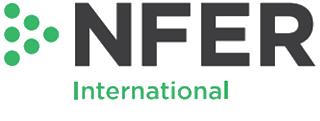PIRLS Research
PIRLS 2021 updates the picture of performance from 2016. The Covid-19 pandemic severely disrupted the study worldwide and therefore, in Northern Ireland, pupils were at the beginning of Year 7 as apposed to the end of Year 6 (as in previous cycles).
Reports from the PIRLS 2021 studies in Northern Ireland are available to download below:
Key findings from PIRLS 2021 National Report for Northern Ireland
- Pupils in Northern Ireland continue to perform very well in PIRLS 2021. They significantly outperformed those in 52 of the other 56 participating countries and were significantly outperformed by pupils in just two, Singapore and the Republic of Ireland.
- Northern Ireland’s overall score in PIRLS has increased over time. Pupils’ reading performance in 2021 was similar to 2016 but significantly higher than in 2011.
- There was a relatively wide spread of reading attainment in Northern Ireland. The gap between high attainers and low attainers was 204 scale score points.
- Girls’ reading scores were significantly higher than those of boys in Northern Ireland. This was the case in 51 of the 57 PIRLS countries. In 2021, Northern Ireland had a gender gap of 24 score points. A steady increase in girls’ attainment over time has resulted in a widening of the gender gap.
- Socio-economically disadvantaged pupils had, on average, lower attainment than their non-disadvantaged peers. This was true when looking at free school meal eligibility and the international measures of socio-economic status.
- The Covid-19 pandemic affected all PIRLS countries’ education systems in some way. Compared to pupils on average internationally, pupils in Northern Ireland experienced substantially more disruption.
- Pupils in Northern Ireland appeared more confident in reading than the international average but liked reading less.
The international report for PIRLS, which covers findings across all countries, was released by the IEA in May 2023.
Key insights from PIRLS 2016 Northern Ireland - What the evidence shows
This key insights briefing summarises three reports that use information from the PIRLS 2016 study in Northern Ireland, and other ILSA data to explore:
- What can Northern Ireland learn from participation in international studies?
- The differences between urban and rural schools in Northern Ireland
- The levels of parental engagement in the learning of children in Northern Ireland
Other sources of information:
- IEA PIRLS 2021
- Northern Ireland National Reports (2016 | 2011)
- PIRLS international study centre
- Department of Education
